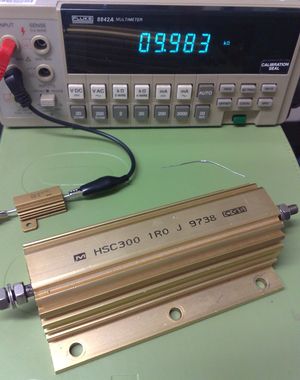Resistor
The Resistor
The resistor is a fundamental electrical component in physical circuits as well as circuit analysis and equivalent circuits. All materials exhibit some form of resistance, some are greater than others, eg. copper, aluminium and gold are considered good conductors (low resistance), stainless steel, carbon, tungsten are average conductors (medium resistance), and then ceramics, mica and air are considered poor conductors (high resistance).
Units of Measurement
The modern day unit of measurement is the 'Ohm'. This unit was assigned in 1872. The mesurement standards for the Ohm reference has improved over time, and these are mainatined by NIST / NATA standards labortaories in temperatire controlled environments.
Given the wide range of resistance measurements, Ohm is ofen prefixed with the the greek multiplier terms, eg. nano-ohn, kilo-ohm, meg-ohm. Resistors are also specified with a power handling capacity, in watts, eg. half-watt, 50 watt, 10kilo-watt etc.
Resistor_example.jpg
